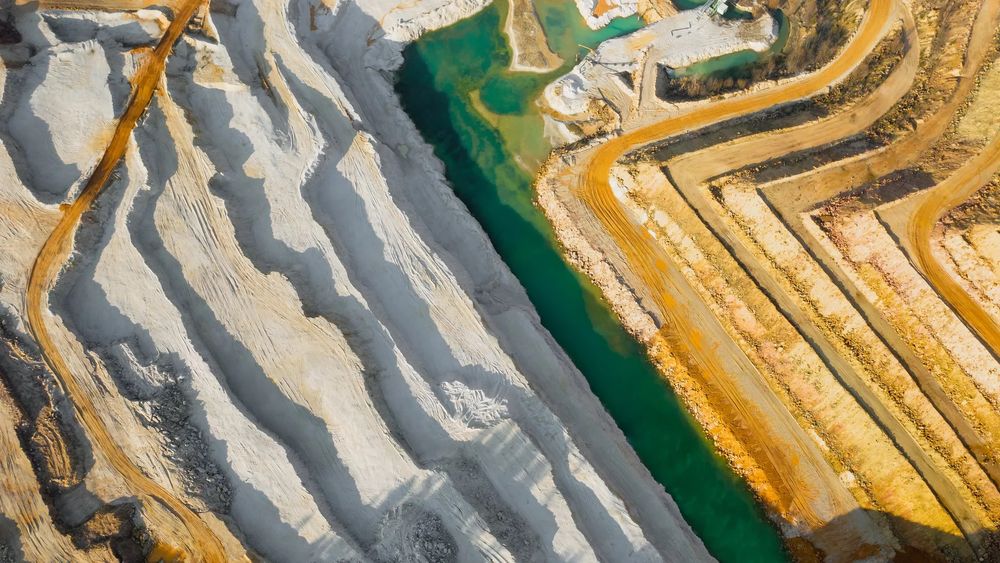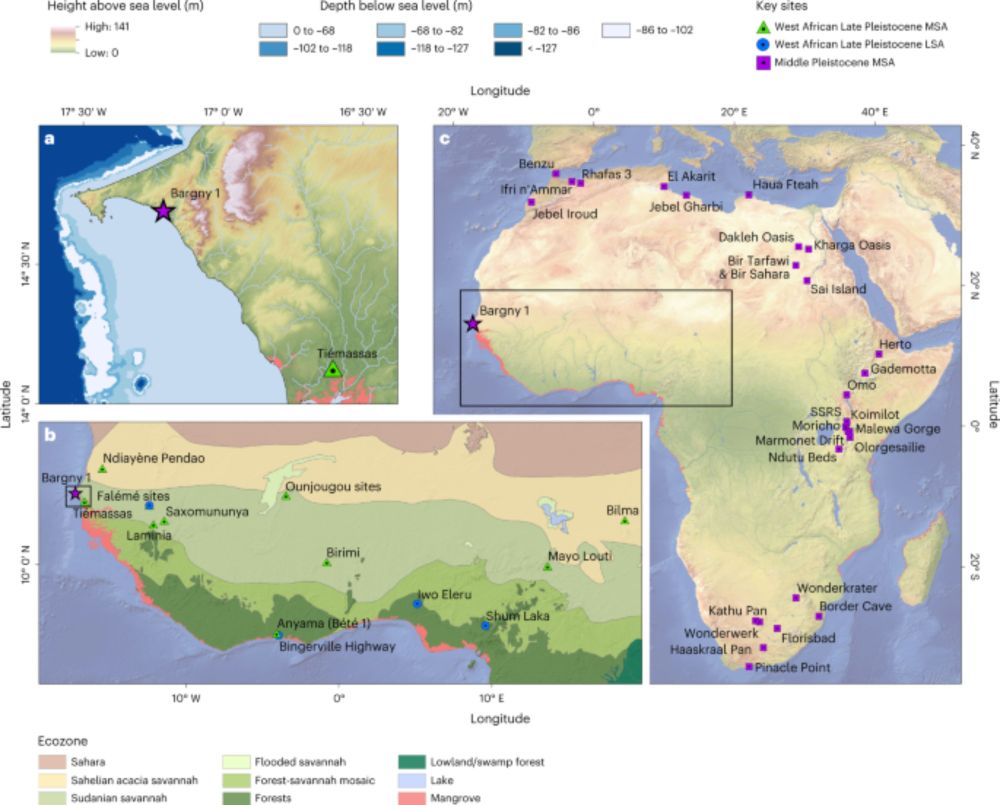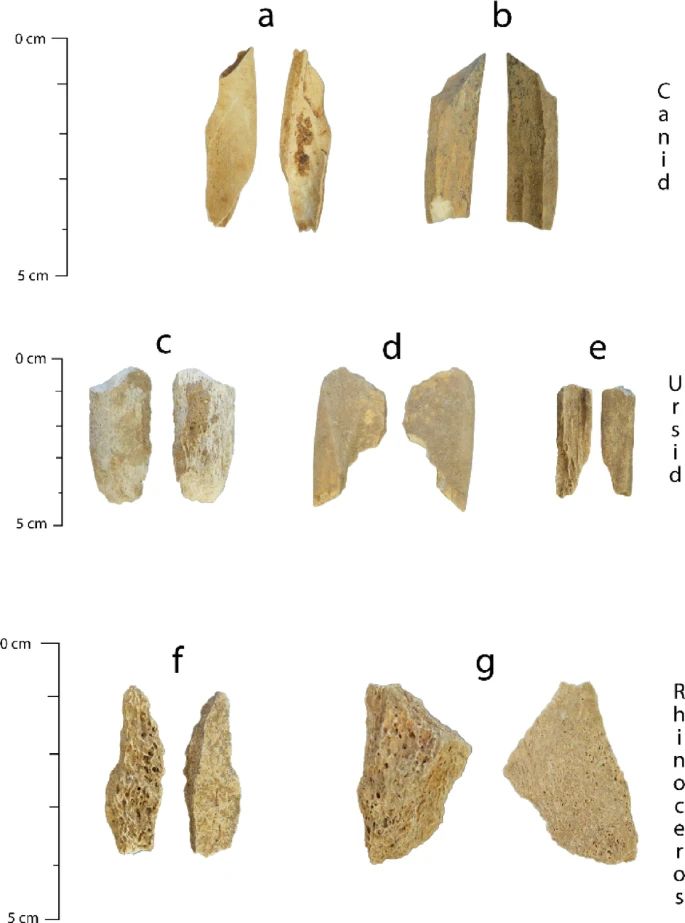
Newly identified taxa from originally unidentified fragmented bones. (a) CLC0043 Canid from spit 14, (b) CLC536 Canid from spit 30, (c) CLC372 Ursid from Spit 27, (d) CLC400 Ursid from spit 28, (e) CLC534 Ursid from spit 30, (f) CLC476 Rhino from spit 24, (g) CLC503 Rhino from spit 25.
Biomolecular approaches to Pleistocene bones
New insights from the application of ZooMS to Late Pleistocene fauna from Grotta di Castelcivita, southern Italy🏺🧪
www.nature.com/articles/s41...
Annette Oertle, Stefano Benazzi @boneslab.bsky.social @tommyhigham.bsky.social @katerinad.bsky.social et al
18.07.2025 14:04 — 👍 4 🔁 3 💬 0 📌 0
I was literally about to submit the edited draft of my new book on prehistory, "Lost Worlds," but now I need to rework the Çatalhöyük section! What a great problem to have, incredibly exciting new research, check it out!
27.06.2025 15:01 — 👍 138 🔁 15 💬 7 📌 2
Two PhD positions open! Deadline end of June! Apply now!
07.06.2025 07:38 — 👍 4 🔁 3 💬 0 📌 1
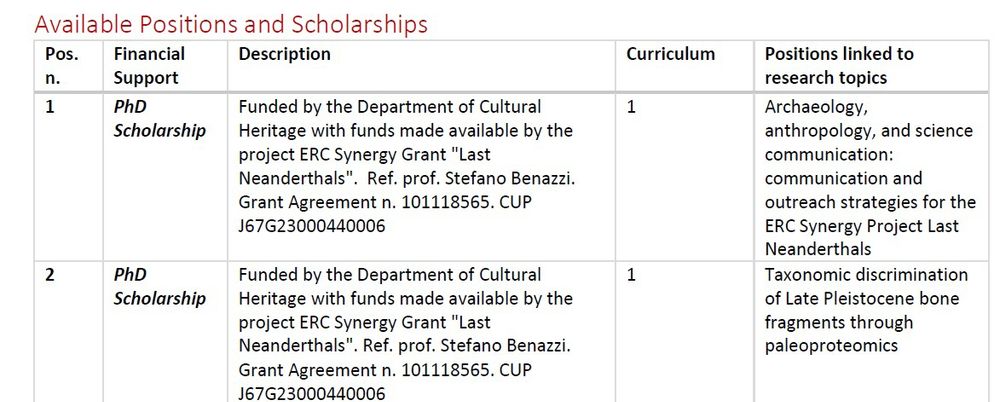
🚨 Two PhD Positions Available!
Join the ERC Last Neanderthal Project at BonesLab – University of Bologna (Ravenna) 🧬🧠
Apply now and become part of an international team exploring the final chapters of Neanderthal history.
www.unibo.it/en/study/phd...
03.06.2025 09:15 — 👍 20 🔁 11 💬 0 📌 3
Two #PhD opportunities in Ravenna, Italy 🇮🇹, in #HumanEvolution within the #ERC project "Last Neanderthals"!
🧪 #science 🏺 #BioAnth #BioArch #Archaeology #Neanderthal #SciComm
10.06.2025 15:45 — 👍 17 🔁 11 💬 0 📌 0
A great opportunity, with a great team and a great lab 🏺🧪
Dr Stefano Benazzi's Bones Lab @boneslab.bsky.social
Two PhD positions open!
Deadline end of June!
Apply now!
bsky.app/profile/bone...
10.06.2025 13:45 — 👍 3 🔁 1 💬 0 📌 0
Two PhD positions open! Deadline end of June! Apply now!
07.06.2025 07:38 — 👍 4 🔁 3 💬 0 📌 1

🚨 Two PhD Positions Available!
Join the ERC Last Neanderthal Project at BonesLab – University of Bologna (Ravenna) 🧬🧠
Apply now and become part of an international team exploring the final chapters of Neanderthal history.
www.unibo.it/en/study/phd...
03.06.2025 09:15 — 👍 20 🔁 11 💬 0 📌 3

🧬Welcome to the new Palaeoproteomics Lab at the University of Bologna – Department of Cultural Heritage (Ravenna), where we study ancient proteins preserved in archaeological remains such as bones and teeth.
03.06.2025 08:57 — 👍 8 🔁 0 💬 0 📌 0
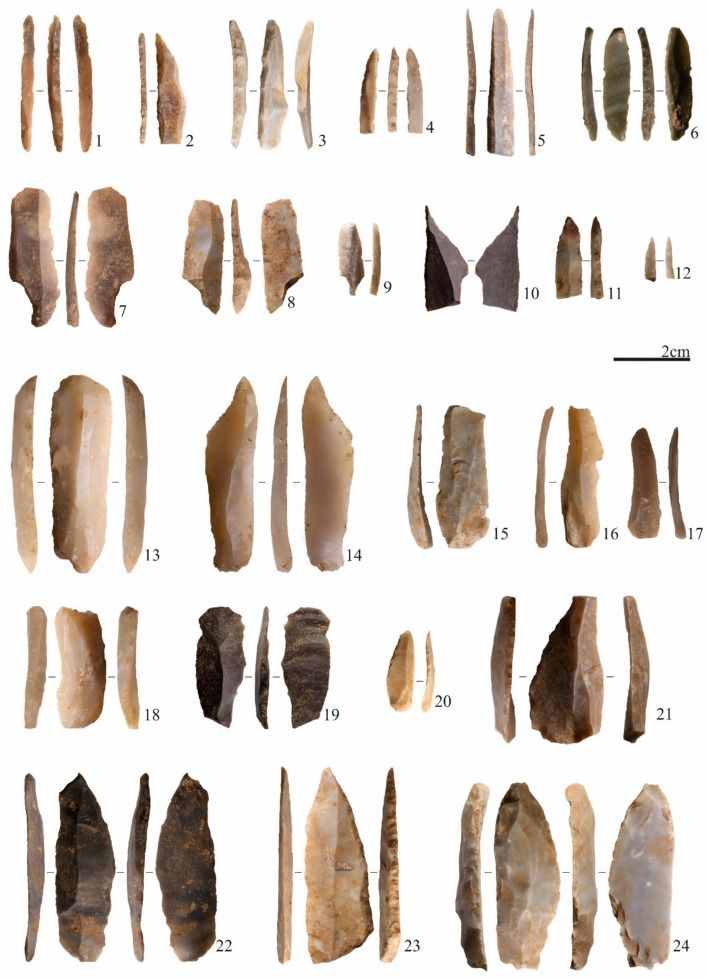
Lithic materials from the Epigravettian occupation (SUs 2, 3, 5, 7) of Grotta della Lea: total backed points (1–2-3–4-12–23); backed bladelets (5–6); shouldered blades (7–8-10); tangled bladelet (9); fragmented backed pieces (11–19); long end scraper (13); unretouched blades (14–15); truncated blade (16); partial backed blade (17); burin (18); marginal backed bladelet (20); elongated side scraper (21); denticulated scraper on blade (22); point (24).
Grotta della Lea, a new Early Epigravettian site in southern Italy (Uluzzo Bay) 🏺🧪
Giulia Marciani, Stefano Benazzi @boneslab.bsky.social , et al
www.sciencedirect.com/science/arti...
Shouldered backed bladelets and points on high-quality chert. Radiocarbon dating between 21,821–18,281 cal. BP
18.04.2025 17:34 — 👍 20 🔁 1 💬 0 📌 0
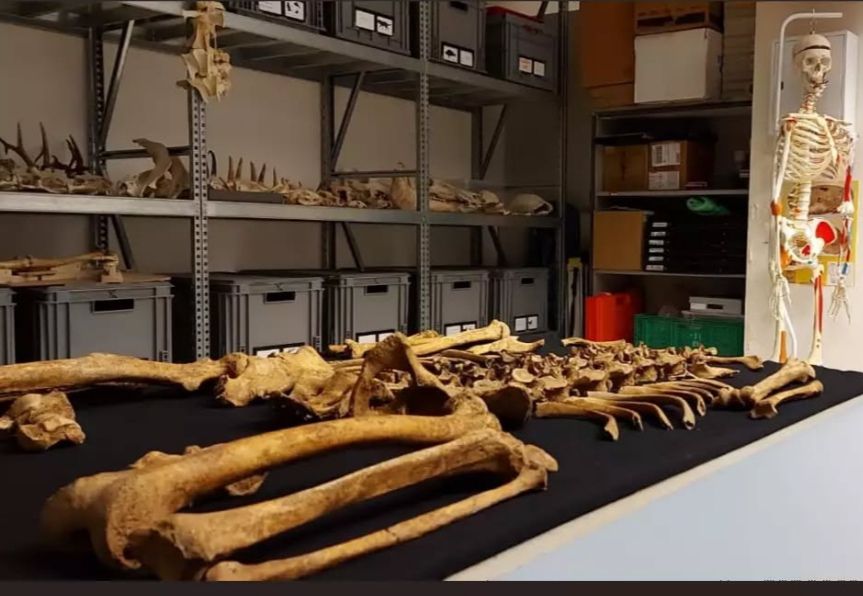
🌍 Join us in the ERC Last Neanderthals!
We're hiring:
1️⃣ PhD: Digital approaches for the study of Paleolithic human remains 🖥️
2️⃣ PhD: Taxonomic discrimination of Late Pleistocene bone fragments through paleoproteomics 🦴
28.02.2025 17:22 — 👍 28 🔁 19 💬 1 📌 0
Skoglund Lab | Ancient human statistical population genomics
We have a 4-year PhD-student opening in our lab, deadline on Wednesday noon.
For anyone interested in computational genomics of ancient human, pathogen, or canid genomes. www.crick.ac.uk/careers-stud...
If you are curious, send in an application!
17.03.2025 11:01 — 👍 24 🔁 36 💬 0 📌 2

Our latest research presents Grotta della Lea, a newly investigated Palaeolithic site in Uluzzo Bay. Check its Early Epigravettian lithics, faunal remains, and AMS dates!
www.sciencedirect.com/science/arti...
11.03.2025 11:33 — 👍 14 🔁 3 💬 0 📌 0
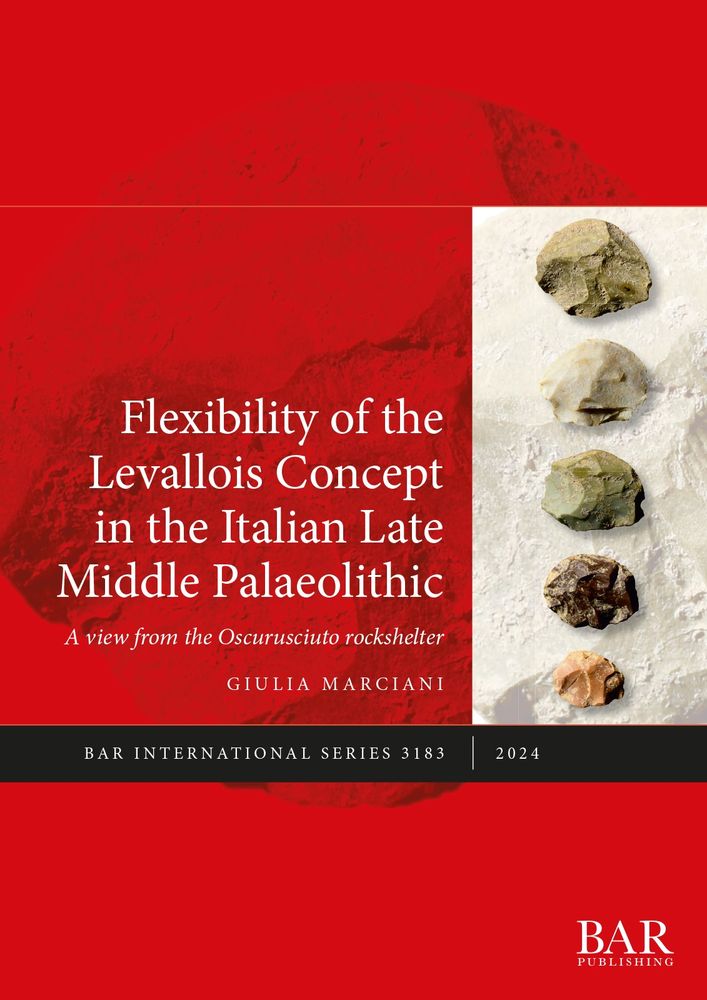
My #review of Giulia Marciani's monograph on the Late Mousterian of Oscurusciuto (Southern Italy) is on Lithic Technology. I totally recommend it!
link to the review shorturl.at/Jotx9
link to the book shorturl.at/wCmcH
#archaeology#palaeolithic @barpublishing.bsky.social@tandfresearch.bsky.social
10.12.2024 14:37 — 👍 22 🔁 6 💬 0 📌 1
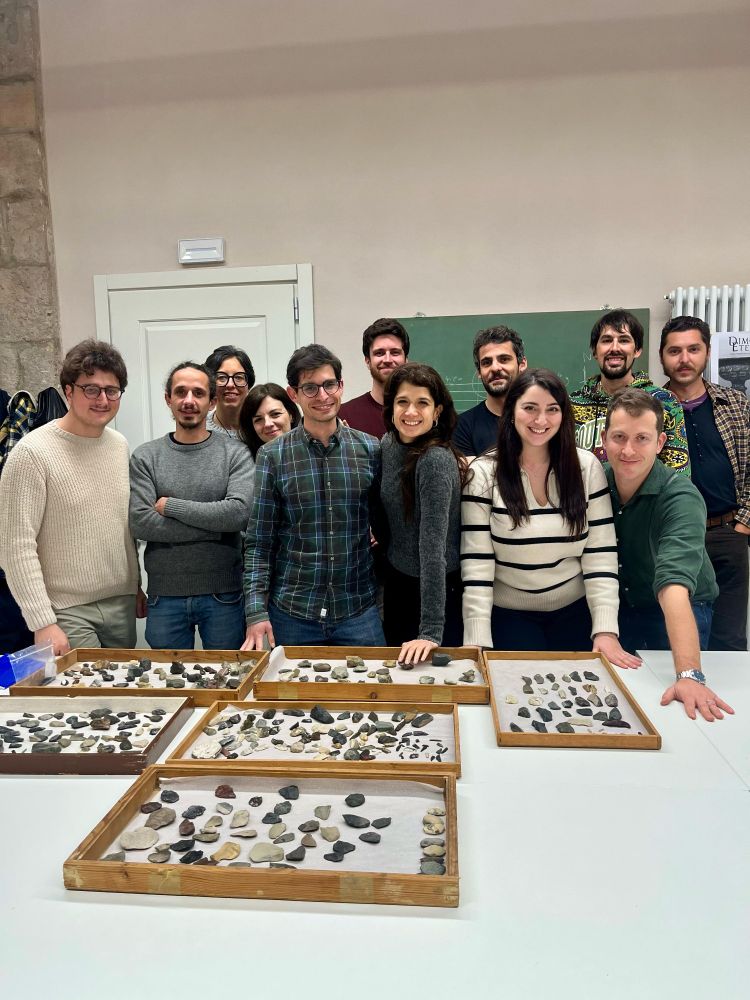
On Monday we launched the first PaleolITica meeting, to foster exchange between young researchers in Italian #Palaeolithic lithic technology. It was very productive, thank you to all the participants! shorturl.at/6J9ba @boneslab.bsky.social #archaeology #FlintFriday #FindsFriday🏺
28.02.2025 18:41 — 👍 6 🔁 3 💬 0 📌 0
www.unibo.it/en/study/phd...
28.02.2025 17:22 — 👍 0 🔁 0 💬 0 📌 0

🌍 Join us in the ERC Last Neanderthals!
We're hiring:
1️⃣ PhD: Digital approaches for the study of Paleolithic human remains 🖥️
2️⃣ PhD: Taxonomic discrimination of Late Pleistocene bone fragments through paleoproteomics 🦴
28.02.2025 17:22 — 👍 28 🔁 19 💬 1 📌 0

Retouched tools from the Châtelperronian of Les Cottés (US6) and Quinçay (En). (1, 2, 11, 12) Wide-fronted end-scrapers produced on ‘laminar rejuvenation flakes’ and wide blades. (3–9, 14, 15) Châtelperronian backed points. (10) Neo-crested blade. (13) Convergent side-scraper. Note the variation in size of the pieces
41982_2024_202_Fig13_HTML.webp
Retouched tools from the Uluzzian layer rsa’’ of Castelcivita. (1) Endscraper on flake. (2) Sidescraper with an adjustment of the distal end. (3) Sidescrapers realised on the ventral side of a big flake. (4) Pointed tool realised by adjusting the distal end of an already pointed fragment
The Uluzzian and Châtelperronian:
No Technological Affinity in a Shared Chronological Framework 🏺🧪
Giulia Marciani @boneslab.bsky.social @mariesoressi.bsky.social et al
link.springer.com/article/10.1...
The distinctiveness highlights the technological behaviours in western Europe 45–40 ka
18.02.2025 19:00 — 👍 31 🔁 5 💬 0 📌 0
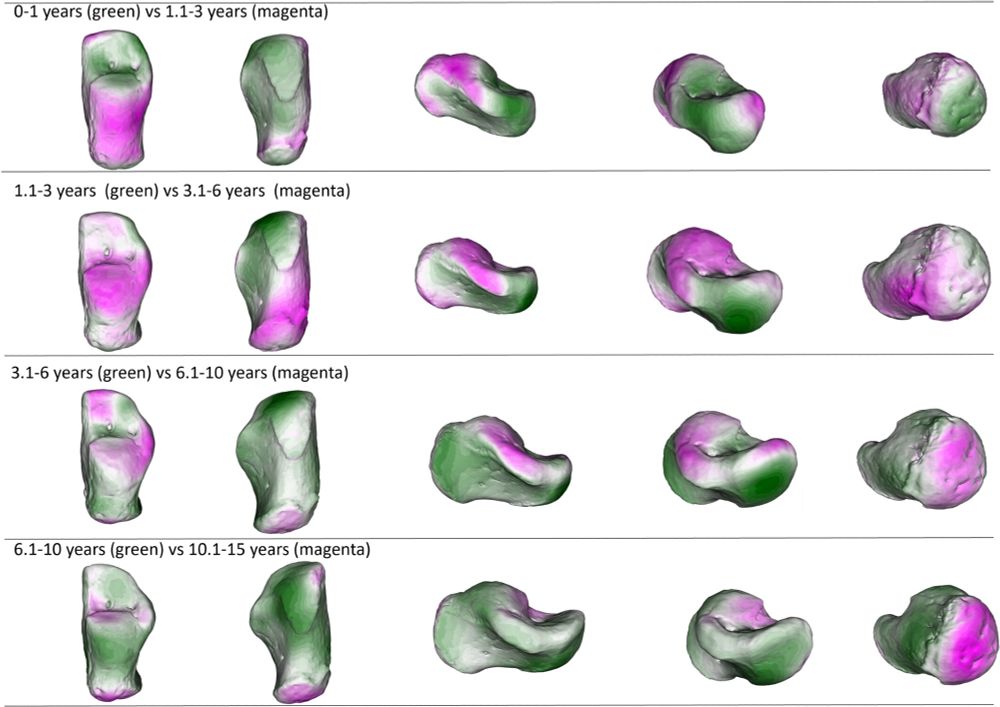
Displacement heatmaps showing calcaneal shape differences between age groups means. Green represents the younger age group in each comparison, while magenta represents the older age group in each comparison. Colors mapped to the older age group in each comparison depict vertices that extend beyond (magenta) the mesh (which represents the younger age group in each comparison). The distance is calculated by superimposing the meshes of the two age groups for each comparison. For instance, the magenta color of the calcaneal body in the first comparison (0–1 year vs. 1.1–3 years) means that the 1.1–3 years group extends beyond the calcaneal body of the 0–1 year group. After the onset of independent walking, there is a proximodistal elongation of the calcaneal body and a slight increase in the medial projection of the sustentaculum tali. The cuboid facet angle starts to change in its lateral part. With the achievement of more mature locomotor kinematics, between 3 and 6 years of age, the posterior talar facet changes in orientation and lateral-medial elongation. The calcaneal body and the sustentaculum tali continue to lengthen, which increases in size and morphology. After six years of age, mostly all remaining changes are concentrated on the metaphyseal area, that is, calcaneal tuberosity, and lateral part of the cuboid facet. The posterior talar facet continues to develop, and the anterior talar facet undergoes major developmental changes as the sustentaculum tali develops.
The Ontogeny of the Human Calcaneus:
Insights From Morphological and Trabecular Changes During Postnatal Growth🏺🧪
Carla Figus, Stefano Benazzi @boneslab.bsky.social et al
onlinelibrary.wiley.com/doi/full/10....
Calcaneal plasticity may display mechanical influences and provide precious information
18.02.2025 17:00 — 👍 5 🔁 1 💬 0 📌 0
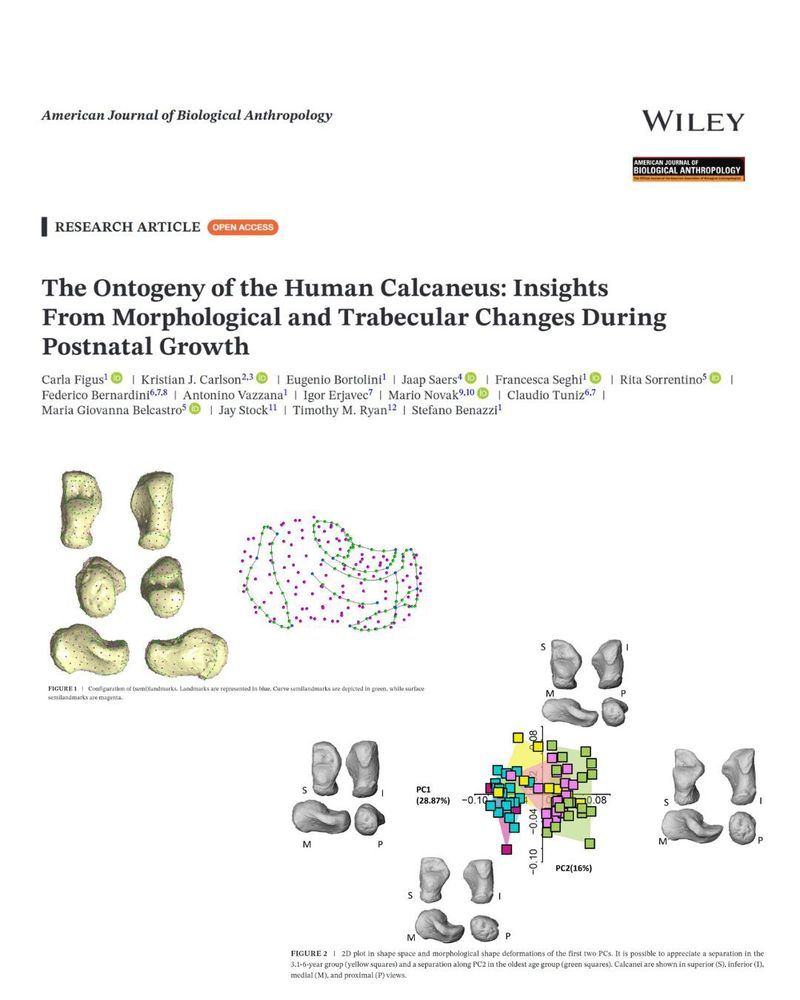
Our new study investigates developmental changes in the human calcaneus linked to the acquisition of mature bipedal locomotion 🦴👣
onlinelibrary.wiley.com/doi/full/10....
15.02.2025 17:53 — 👍 4 🔁 0 💬 0 📌 0
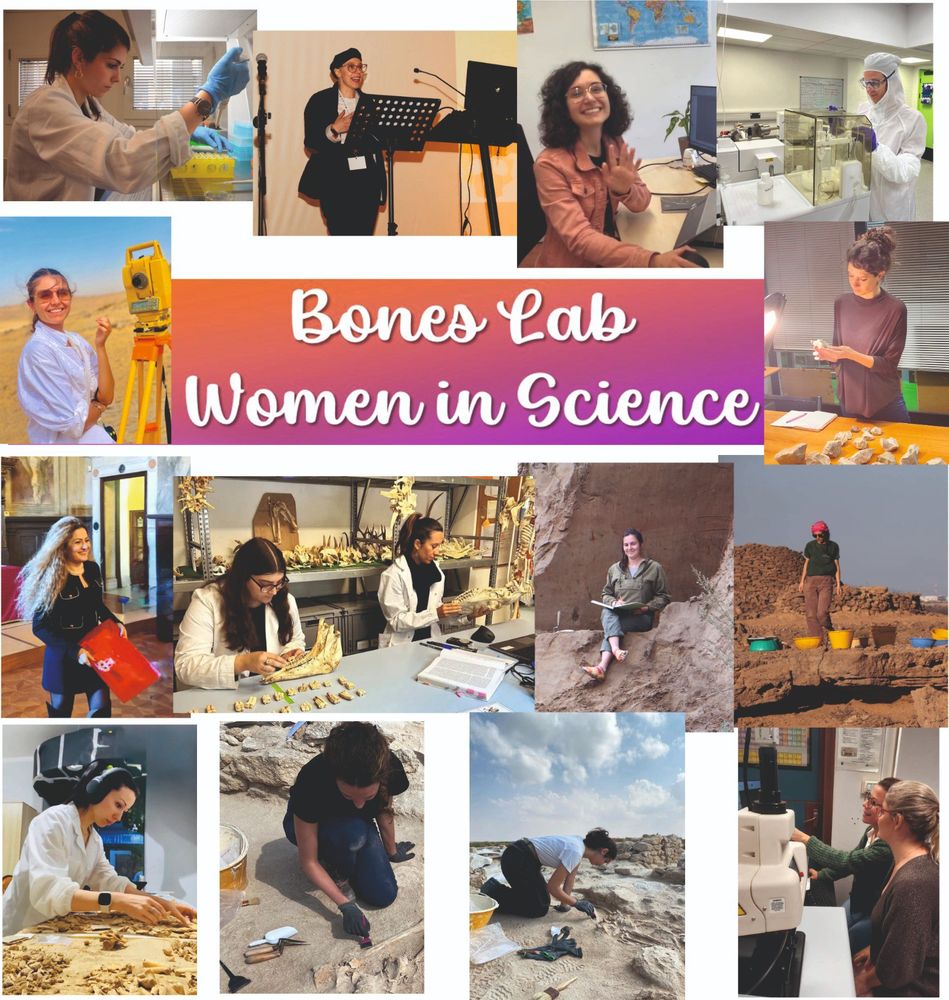
Being a woman in science is not just something to celebrate today, but a journey of resilience and determination in a field historically shaped by men. Cheers from the women of Bones Lab!
11.02.2025 22:30 — 👍 7 🔁 0 💬 0 📌 0
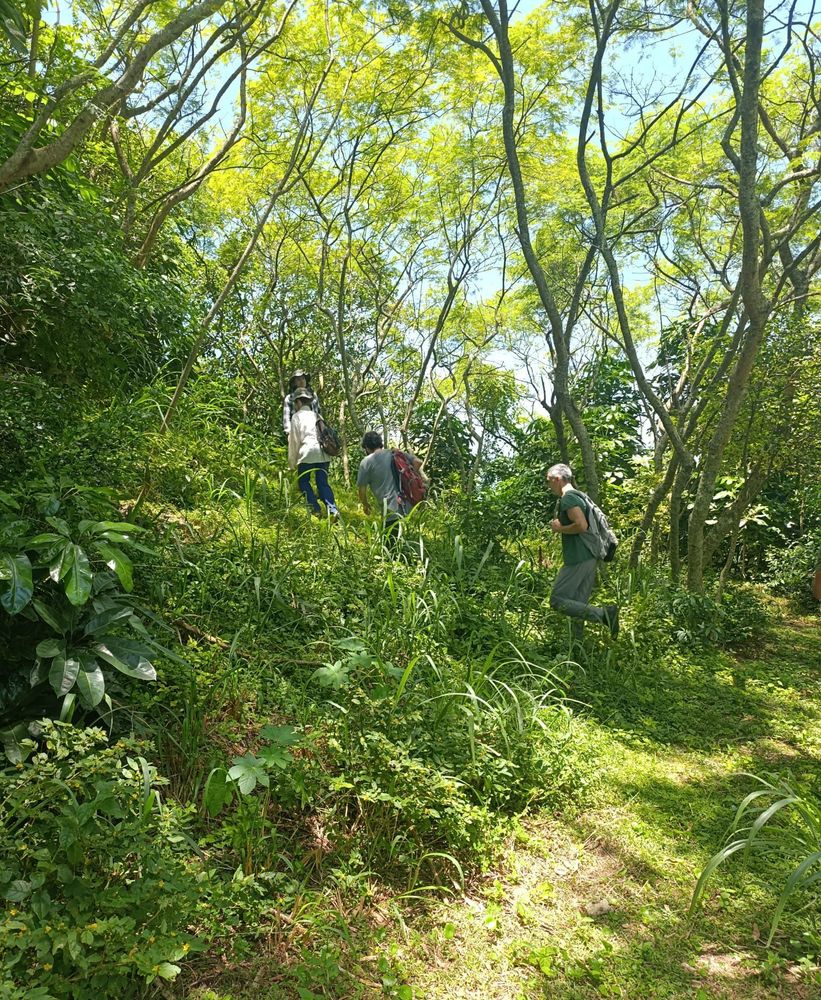
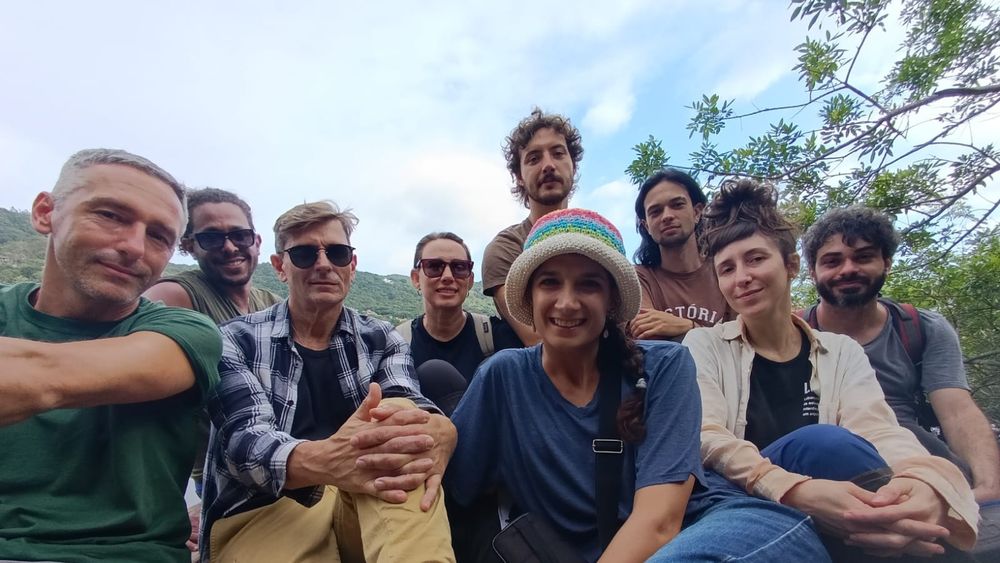
🌊 Our team just completed an archaeological survey of the most significant sambaqui on Florianópolis Island, kickstarting a new project at one of these sites.
The research is supported by a collaboration including BonesLab (Italy), Unochapecó, CEOM, UFPEL, LEIA/UFSC (Brazil), and CONICET (Argentina)
10.02.2025 09:43 — 👍 6 🔁 0 💬 0 📌 0
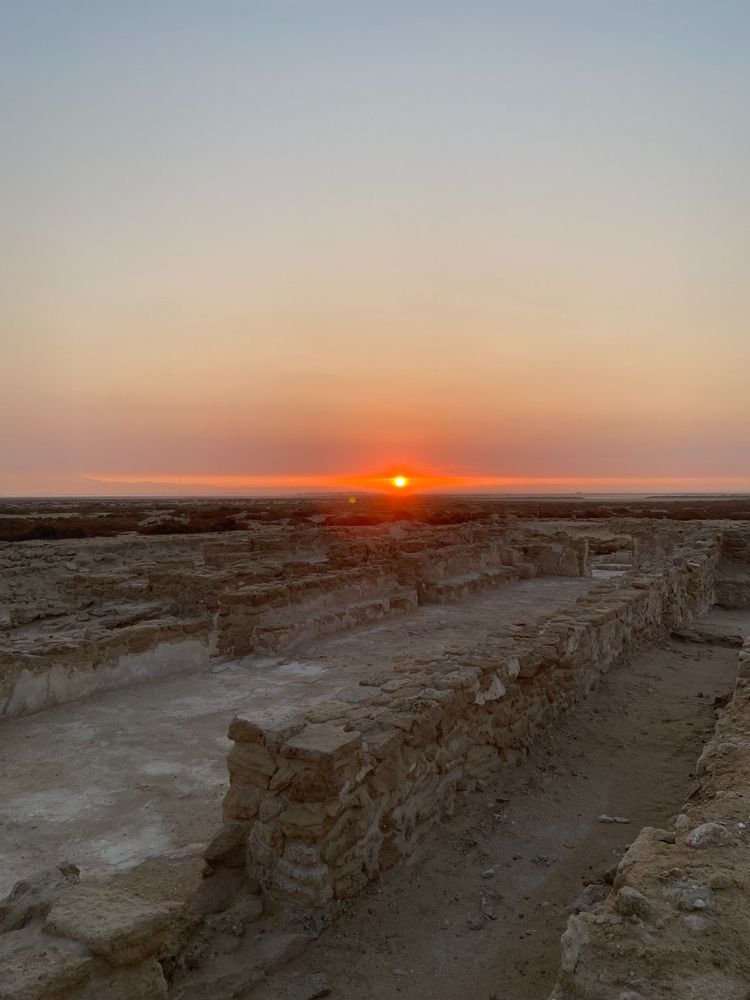
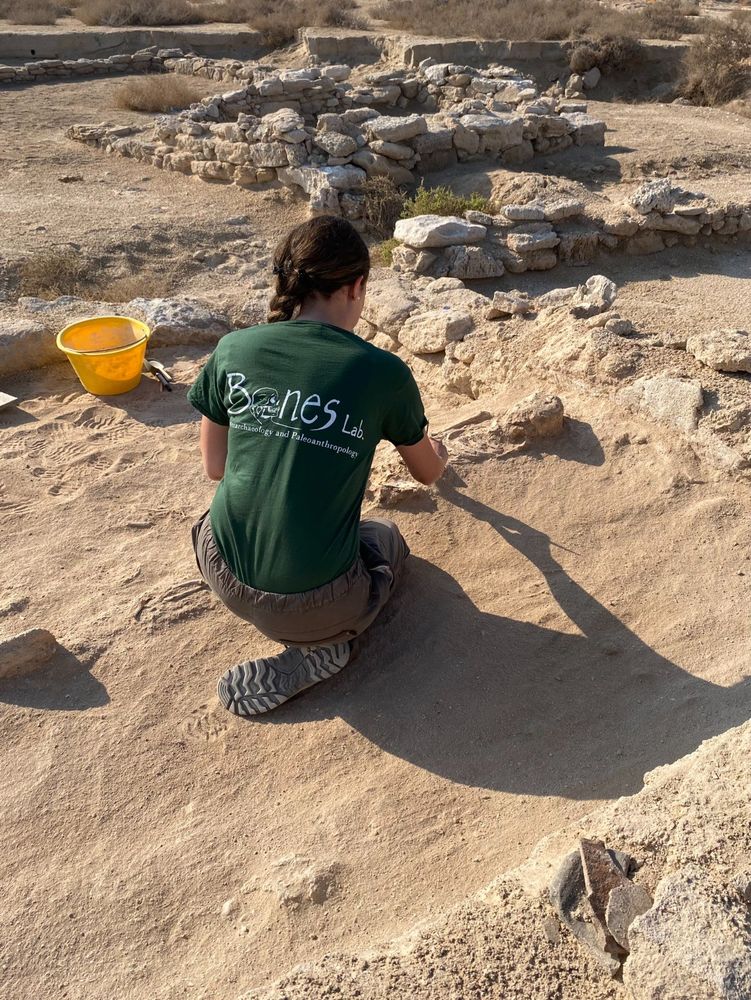
BonesLab is also in the UAE with the Italian Archaeological Mission in Umm al-Quwain on Siniya Island
@tetinicolosi @iamuq_uae @uaq_tad
03.02.2025 21:12 — 👍 3 🔁 0 💬 0 📌 0
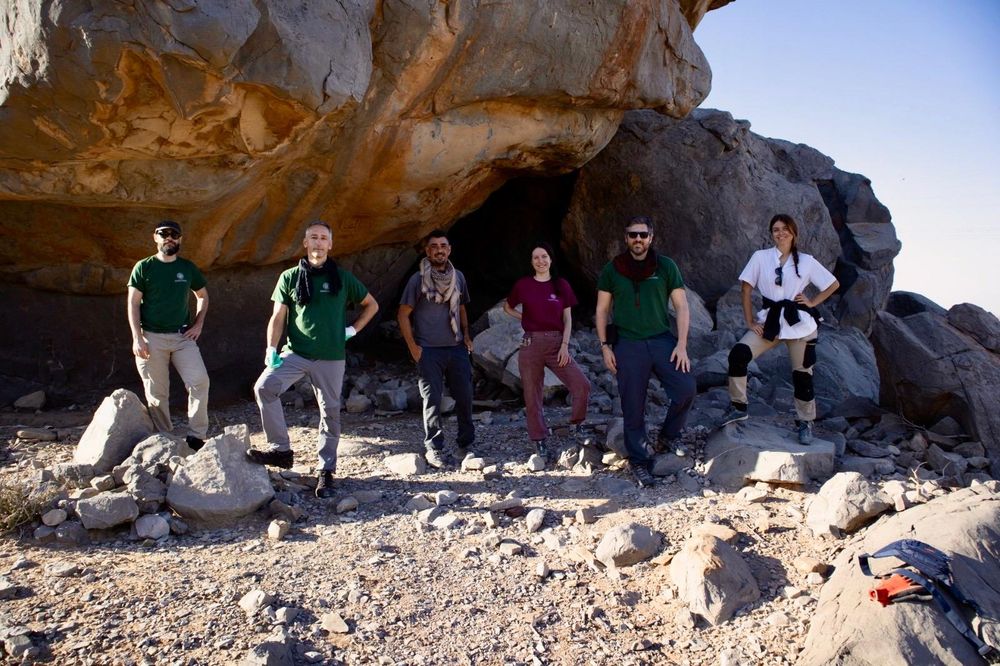
Just arrived and ready to excavate one of the most promising Paleolithic rock shelter in northern Oman! Excited for what discoveries lie ahead!
30.01.2025 16:45 — 👍 13 🔁 0 💬 0 📌 0
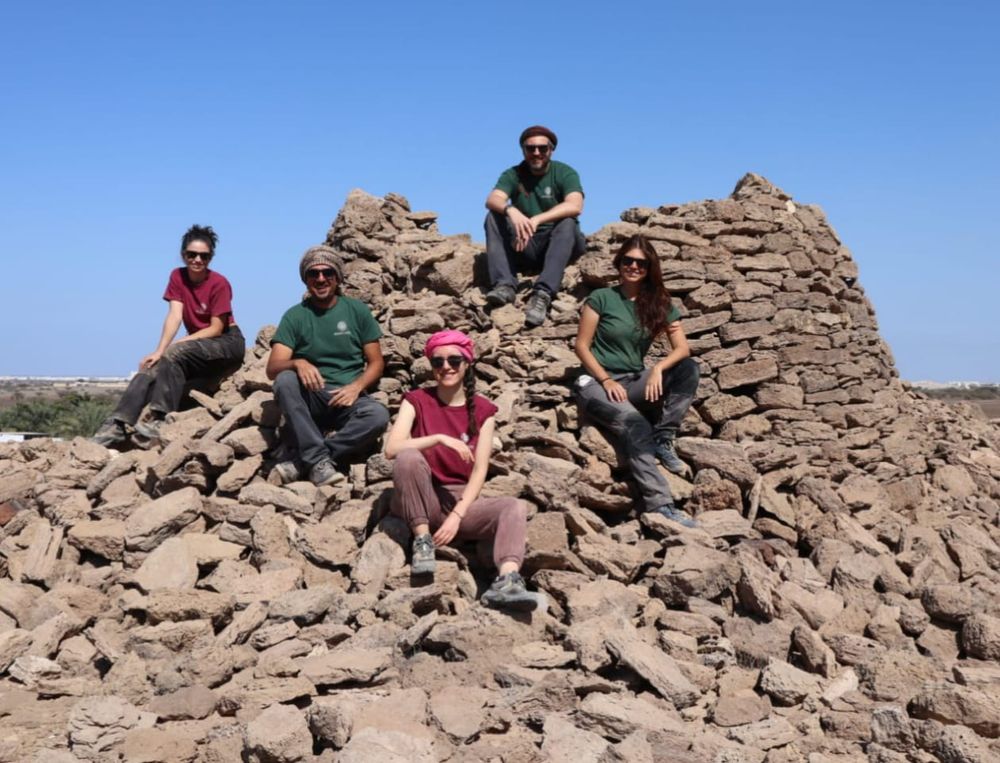
The third excavation campaign at the Bronze Age necropolis of Halban, Oman (IAMHAL project) has just come to an end. Another year of thrilling discoveries and an incredible team!
28.01.2025 18:39 — 👍 3 🔁 0 💬 0 📌 0
PaleoAnthropology Journal has made it to Bluesky! We are a fully externally peer-reviewed, Open Access, online-only journal. We have no publication fees, and are accessible free of charge to all. Find our website above to read our current issue, or if you are interested in submitting to our journal
23.01.2025 11:06 — 👍 67 🔁 30 💬 3 📌 3
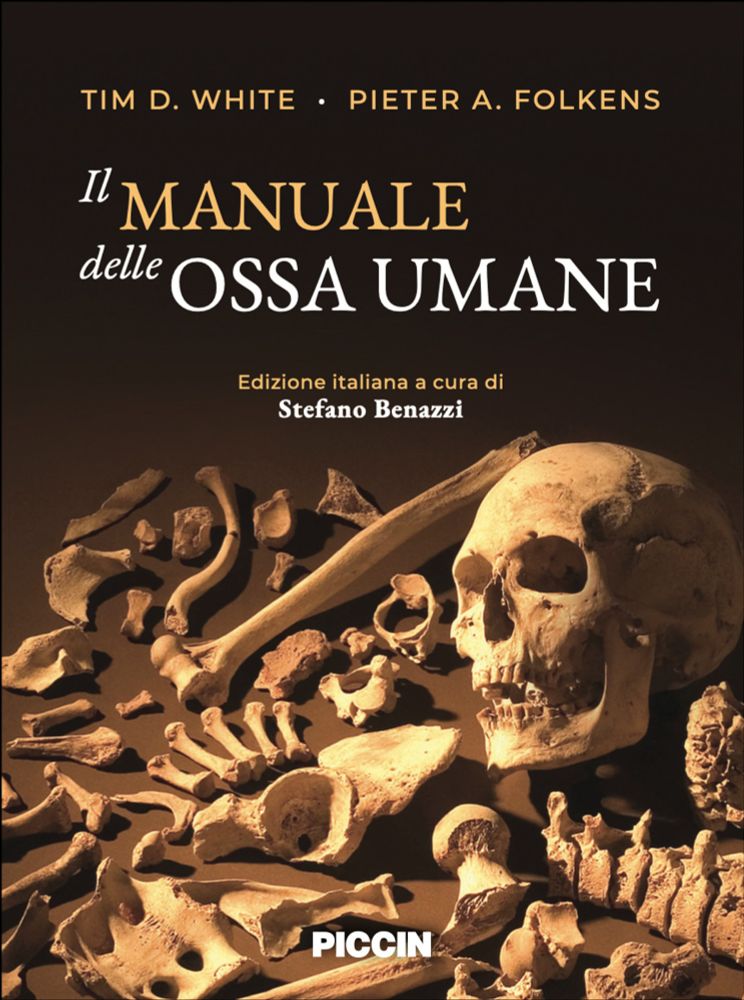
Il Manuale delle Ossa Umane - PICCIN Nuova Libraria S.P.A.
Thrilled to announce the release of the Italian translation of The Human Bones Manual by Tim D. White and Pieter A. Folkens! 🎉💀🦷🦴📘
www.piccin.it/en/antropolo...
#Anthropology #Osteology #Archaeology #Forensics #TheHumanBonesManual #IlManualeDelleOssaUmane #Translation
24.01.2025 17:44 — 👍 6 🔁 1 💬 0 📌 0
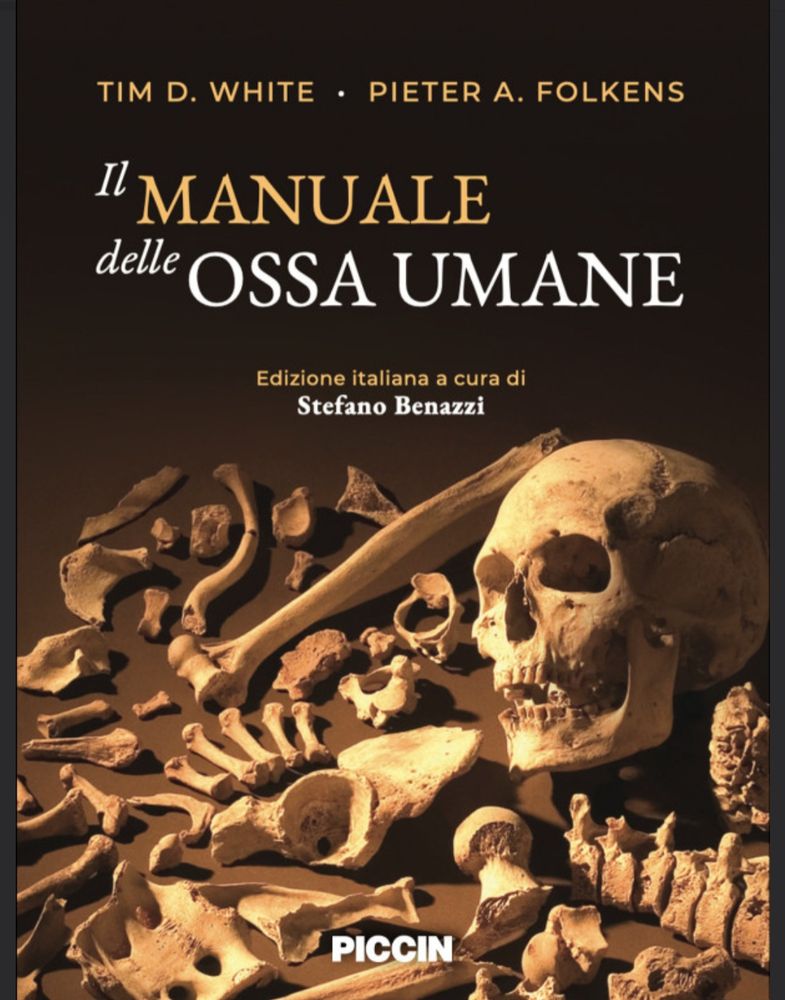
Thrilled to announce the publication of the Italian translation of The Human Bones Manual by White and Folkens!
This work, translated by Owen Higgins and curated by Stefano Benazzi, is now available in Italian🦴📖
Check it out at www.piccin.it/en/antropolo....
23.01.2025 08:20 — 👍 11 🔁 0 💬 0 📌 0
Official account of the Prehistory research group of the University of Pisa. The group displays a variety of expertises from the Palaeolithic to the Metal Ages focussing mostly on the Mediterranean and neighbouring areas https://shorturl.at/pMuZv
Scientific archaeology | Cosmogenic nuclides | Arabian archaeology | Absolute dating methods | Geochronology | Czech Academy of Sciences | Early hominin dispersal
Funded by the European Research Council (No. 949330). In collaboration with the FECYT– Ministerio de Ciencia, Innovación y Universidades
Centre @iCERCA dedicat a la recerca, docència i socialització de l'evolució humana 🦴 Research in #HumanEvolution and #Prehistory
ℹ️ Tarragona 🔗 http://www.iphes.cat
Centro Nacional de Investigación sobre la Evolución Humana que forma parte del mapa español de Infraestructuras Científicas y Técnicas Singulares (ICTS), ubicado en Burgos
www.cenieh.es
PhD student in Zooarchaeology at Uni Tübingen - Project REVIVE #Paleolithic #Archaeology #Zooarchaeology #AnimalEcology #Science #Nature
Assistant Professor in Human Evolution, University of Cambridge | Mainly interested in Neogene fossil primates, other mammals, and ecosystem evolution in Africa | www.rowanlab.org
Palaeolithic archaeologist (PhD) focused on lithic raw material economy. Archaeologist @Petralona Cave, Gr | Museum educator @The Acropolis Museum, Gr
▪️Paleolithic archaeology
⛏️ Excavations
▪️Population interactions & human behaviors during the early/middle paleolithic
📍Levant and Central Asia
▪️Head; Prof. Yossi Zaidner
🏛️ Hebrew University of Jerusalem
www.hcelabhuji.com
www.tinshemetcave.com
Senior Lecturer in Evolutionary Anthropology Liverpool John Moores University, UK. Co-Lead of Research Centre for Evolutionary Anthropology & Palaeoecology. Main research project: hybridisation in human evolution.
Dr. 🎓
Geologist ⚒️
Paleoanthropologist 💀🦴🦷 #Miocene apes 🐒
Postdoc and lecturer @Harvatilab at Uni Tübingen ✨️
Posting the latest discoveries in human evolution and primatology. We also spotlight the broader field of biological anthropology—from the history of our discipline to talks, conferences, and job opportunities.
Archaeologist and paleoanthropologist. Dental Anthropology 🦷🔬
Working at IPHES-CERCA and URV
Palaeolithic Archaeologist working on lithic tools | Universitat Rovira i Virgili | Iphes | Atapuerca Research Team (Sima del Elefante) | Cova Eirós site co-director
Official Bluesky account for PaleoAnthropology
Published jointly by the Paleoanthropology Society and the European Society for the Study of Human Evolution (ESHE)
paleoanthropology.org
Prehistoric archaeologist - PhD student in lithic technology at Uni Tübingen 🪨
News from the #Paleoanthropology 🦴🦷⚒️ lab at the University of Tübingen 🎓 & Senckenberg 🌍
🧪🦴subsistence strategies & ancient proteins - arid environments 🐑🐐- @GLOBE_UCPH @Welkergroup - @MSCActions postdoc fellow #MSCA_ICARHUS
Paleoproteomics • Mass Spectrometry

